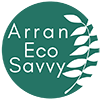Andrew Stirling of Digital Blacksmith held a fascinating Kefir workshop at our EcoHub open day on Tuesday March 8th. Below is a short extract from his blog which formed the basis of his workshop and gives a detailed overview about the history, science and health benefits of this fermented drink!
Kefir is a cultured, fermented milk drink, originally from the mountainous region that divides Asia and Europe . The name comes from the Turkish word “keyif,” which refers to the “good feeling” a person might have after drinking it.
Kefir has a tart and tangy flavor and a consistency similar to drinkable yogurt. It is made by adding bacteria and yeast cultures (in the form of ‘grains’) to milk. The cultures feed on natural sugars (lactose) in the milk and produce a fermented liquid. The fermentation reduces lactose, aiding with lactose intolerance, but does not eliminate it. The process is mesophillic because it happens at room temperature (as opposed to Themophillic) , as yoghurt production tends to require.
Kefir has the following claimed health benefits:
- Blood sugar regulation
- Lowering cholesterol
- Improving digestive health
- Killing pathogens
- Wound therapy
Having given an overview, we were then treated to a sample which Andrew had brought along. The milk had been fermenting for 36 hours to make the Kefir. It had a soured, not unpleasant, taste. Andrew kindly shared some of his grains with the attendees. The grains multiply as they ‘feed’ on milk. 1tbsp of grains should be added to 250ml milk and this will ferment at room temperature to produce Kefir within 24 hours. This can then be refrigerated to slow the fermentation process down. The Kefir should be strained in a sieve before consuming and the grains ‘fed’ more milk to create more Kefir. All that is needed is a clean, preferably glass, container, grains, milk and time to make this nutritious drink! Direct sunlight and temperatures of more than 25 degrees should be avoided as this has a negative impact on the fermentation.
Having sampled the pure Kefir, Andrew also gave us a taste of his delicious cheese scones which he’d made. He has kindly shared his recipe here. Kefir can be used as a substitute for buttermilk and was delicious in the scones.
Many thanks to Andrew for his informative workshop and for sharing his grains!


